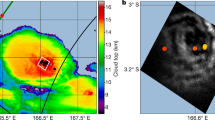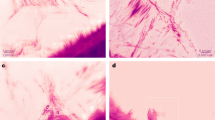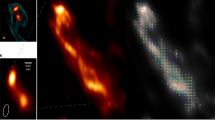Abstract
As a result of the use of rapid sequence H-alpha cinematography, Lockheed Solar Observatory has collected a large quantity of data on disk surges during 1959 and 1960. Since January 1960, the band pass of the birefringent filter has been displaced 0.5 Å. to the blue or red of H-alpha. The increased contrast between active absorption features and the background in the wings of H-alpha has resulted in a greater ability to detect disk surges. The percentage of flares of all classes associated with observed surges increased from 11.4 per cent in 1959 to 20.4 per cent in 1960. Approximately 94 per cent of the total flares were sub-flares. During the two years, a total of 953 flare surge events were photographed at the Observatory.
This is a preview of subscription content, access via your institution
Access options
Subscribe to this journal
Receive 51 print issues and online access
$199.00 per year
only $3.90 per issue
Buy this article
- Purchase on SpringerLink
- Instant access to full article PDF
Prices may be subject to local taxes which are calculated during checkout
Similar content being viewed by others
References
Giovanelli, R. G., and McCabe, M. K., Austral. J. Phys., 11, 191 (1958).
Babcock, H. W., and Babcock, H. D., Astrophys. J., 121, 349 (1955).
Howard, R., Astrophys. J., 130, 193 (1959).
Leighton, R. B., Astrophys. J., 130, 366 (1959).
Author information
Authors and Affiliations
Rights and permissions
About this article
Cite this article
MALVILLE, J., MORETON, G. Trajectories of Chromospheric Disk Surges. Nature 190, 995 (1961). https://doi.org/10.1038/190995a0
Issue date:
DOI: https://doi.org/10.1038/190995a0
This article is cited by
-
Kelvin–Helmholtz instability of magnetohydrodynamic waves propagating on solar surges
Astrophysics and Space Science (2015)
-
The dynamics of solar surges
Solar Physics (1973)
-
Some statistical properties of surges
Solar Physics (1969)



